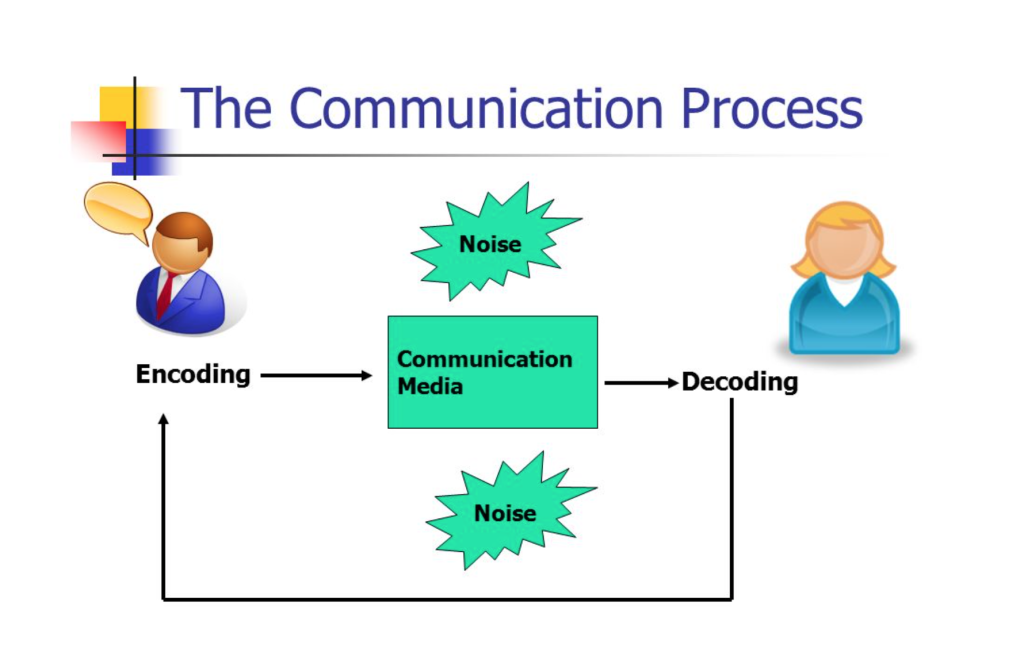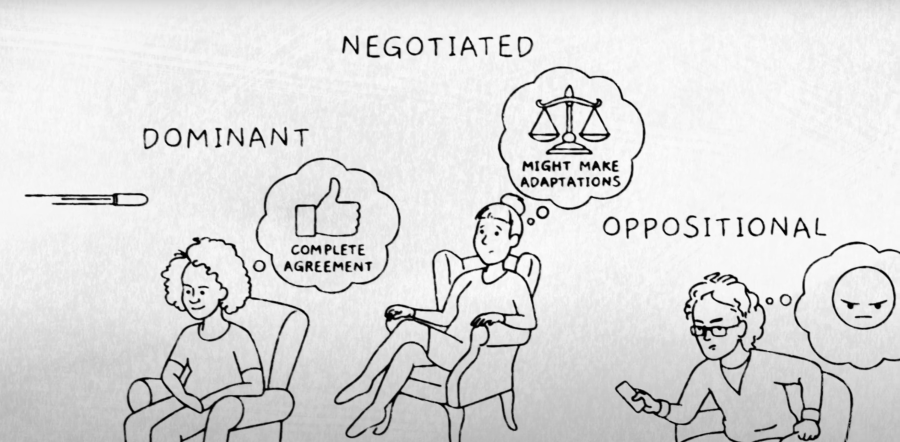Encoding: Encoding means how the sender translates his thoughts or messages into a symbolic form for the receiver. Symbols can include words, numbers, images, facial expressions, and actions.
Decoding: The receivers understand or explain the encoded messages sent by senders.

Sender: Who wants to convey a thought or message.
Receiver: The person or audience for whom the message intended.
Four¬†stage cycle: Production — Circulation — Consumption — Reproduction

Production is the beginning of the encoding. It comprises a multitude of factors. And the way in which the encode is disseminated is a very important factor. A distinction is made between visual and written information. How things are disseminated has an influence on how the receivers take in the messages and consume them. Consumption means that in this stage, the encode must be decoded in a meaningful way and that the decoded message has active receivers. The final stage, Reproduction, has more to do with personal factors. Reproduction¬†is the receiver’s personal experience of whether or not the beliefs decoded will be acted upon.
In this cycle, the step that is most likely to be interrupted is Production. The differences in race, gender, class, and so on, may cause the receivers to understand messages differently. Therefore, the group of recipients is also important.
Three positions upon decoding messages

Dominant-hegemonic position: the receiver takes the message in the exact way the sender sent it. The consumers accept the intended meaning because both (sender/receiver) have the same thinking.
Negotiated position: receivers understand the message in general, but they donвАЩt completely accept it. The audience modifies the message reflecting their own beliefs and interests.
Oppositional position: the receiver understands the meanings of a message while decoding it in a contrary way, so the audience rejects the message.

